Cassava, also known as Manihot esculenta or yuca, is a starchy root vegetable widely consumed worldwide. It is an important source of carbohydrates and calories for many populations who depend on it as a staple food, particularly in Africa and Latin America. Cassava has numerous nutritional benefits but can also be dangerous to eat if not prepared properly. This article explores the potential risks associated with eating cassava, its nutrition profile, and how to select and prepare it safely.
What is Cassava?
Cassava is a root vegetable that belongs to the Euphorbiaceae family. It is native to South America but is now grown in many tropical regions worldwide. Cassava is sometimes referred to as yuca or manioc, and its long tuberous roots have brown skin with white, yellow, or purple flesh. It is a versatile vegetable that can be eaten boiled, mashed, or ground into flour.
History and Origin of Cassava
Cassava is thought to have originated in the Amazon rainforest, where it has been cultivated for thousands of years. It was originally used as a famine food among indigenous populations who relied on its high-calorie content and long shelf life to survive. In recent centuries, cassava has spread throughout South America, Africa, Asia, and the Caribbean. It is now a major staple food in many countries, and its production has increased substantially over the last few decades.
Types of Cassava:
There are two main types of cassava: sweet and bitter. Sweet varieties are generally more widely consumed, as they have a milder taste and less cyanide content than their bitter counterparts. Sweet varieties include Brazilian mandioca, Mexican zapoteca, and Jamaican yellow yam. Bitter varieties include the African macabo, Brazilian macaxeira, and Nicaraguan guayape.
Nutrition Profile of Cassava:
Cassava is a versatile source of nutrition. It is an excellent source of dietary fiber and several important vitamins and minerals. It provides more than twenty percent of the daily recommended value for fiber in just one serving. Additionally, cassava contains vitamins A and C, calcium, iron, magnesium, phosphorus, potassium, copper, and zinc. It is also a good source of protein, containing about 14% of the daily recommended value per serving.
In addition to these vitamins and minerals, cassava contains numerous antioxidants that can help protect against disease and support overall health. This makes it an excellent choice for those looking to get more out of their diet. Finally, cassava also has a low glycemic index which helps to regulate blood sugar levels throughout the day. This makes it an ideal food for people with diabetes or other blood sugar-related conditions.
Cassava is an incredibly nutritious food that provides many essential nutrients in a single serving. In addition to being rich in dietary fiber and numerous vital vitamins and minerals, it is also a great source of antioxidants and has a low glycemic index. With its wide range of benefits, cassava is an excellent choice for anyone looking to optimize their health and well-being.
Health Benefits of Cassava:
Cassava is a root vegetable with many health benefits. It contains essential vitamins and minerals, including Vitamin C, potassium, magnesium, and manganese. Cassava also contains dietary fiber, which helps to regulate the digestive system. The high content of antioxidants helps protect against cell damage from free radicals, which can lead to serious diseases like cancer. Additionally, cassava has been found to reduce cholesterol levels and increase HDL (good) cholesterol levels, which can benefit heart health.
Furthermore, studies suggest that consuming cassava may improve blood sugar control and reduce insulin resistance in people with diabetes.
Lastly, the nutrients present in cassava help support immune system functioning by aiding the body’s ability to fight off infections and disease-causing bacteria. All these health benefits make cassava a great choice for anyone looking to improve their health and well-being.
How to Plant Cassava?
Cassava is a versatile crop that is easy to grow and provides numerous health benefits. It’s an important staple food in many areas of the world, and its hardiness makes it a great addition to any garden. Planting cassava is relatively simple, but you need to know a few key steps for success.
1. Choose the best site:
When selecting where to plant your cassava, pick a spot with plenty of sunlight and well-drained soil. Avoid planting in low-lying areas, as these can experience flooding during heavy rains. If possible, avoid spots that have been recently cultivated or have been used for planting other root crops like potatoes. Also, consider the length of your growing season, as cassava takes at least 6 months to mature.
2. Prep the soil:
Before planting, add some organic matter, like compost, into your soil for the best results. This will help to retain moisture and provide essential nutrients for your crop as it grows. After prepping the soil, break up any large clouds or stones so that roots can easily penetrate the ground. You may also need to adjust the pH level if necessary.
3. Planting:
When ready to plant, dig a hole about two inches deep for each stem you want to plant. Place the stem in the hole and cover it with soil, ensuring enough room around each stem for growth and development. Water generously after planting and keep the soil moist by watering regularly.
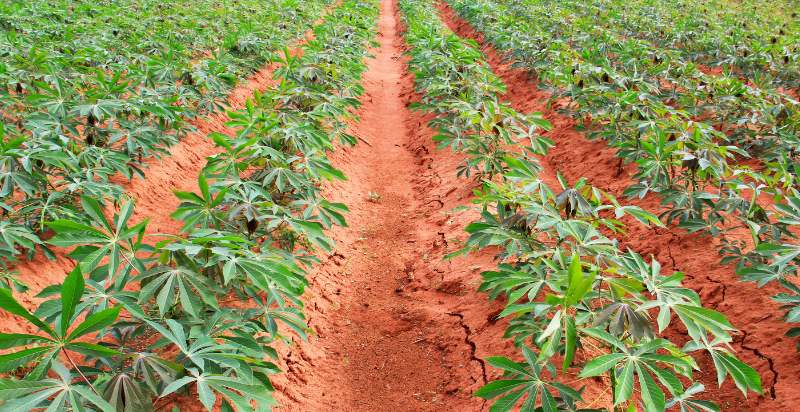
4. Mulching:
To help conserve moisture and minimize weeds, add a layer of mulch over your cassava plants after they have been planted. Straw or grass clippings are ideal for this purpose, as they will decompose over time and provide extra nutrition to your crop.
5. Harvesting:
Depending on the type of cassava you’re growing, it can take anywhere from six months to two years before reaching maturity. When harvesting, carefully dig up each stem and shake off as much dirt as possible before cutting away any damaged parts or roots with a sharp knife. Allow the harvested stems to dry in the sun for several days before storing them in a cool, dry place.
Following these steps, you’ll be well on your way to a successful cassava harvest. With patience and careful planning, you can enjoy this versatile crop’s delicious and nutritious rewards.
How to Care for and Grow Cassava?
Here are some tips for caring and growing cassava plant:
1. Fertilizing:
Cassava can benefit from regular fertilization throughout its growing season to ensure that it has enough nutrients to produce a good harvest. A balanced fertilizer is best, although you may need to adjust this based on the soil type in your garden. If desired, add compost or other organic matter for additional nutrition.
2. Weeding:
Regular weeding will help keep weeds from competing with your cassava plants and reduce their yield. Pulling up unwanted plants by hand is usually sufficient, but using herbicides is an option if desired. Just ensure that no chemicals come into contact with edible parts of your crop.
3. Watering:
Cassava prefers moist soil, so regular watering is essential. Depending on weather conditions, you may need to water your plants several times a week for the best results. Avoid getting the leaves and stems wet, as this can lead to disease or other problems.
4. Pest control:
If pests or diseases become an issue, a few treatment options are available. Natural predators such as ladybugs and praying mantes can be released into the garden to help keep pest populations down. You can also use insecticides and fungicides if necessary, but ensure they are safe for food crops.
Growing cassava is a great way to enjoy its many health benefits while adding an interesting addition to your garden. With the right soil, fertilizer, and care, you can have a successful harvest of this versatile crop in no time. Just remember to be patient, as it does take some time for cassava plants to reach maturity. With the proper knowledge and guidance, you’ll soon be enjoying its delicious roots.
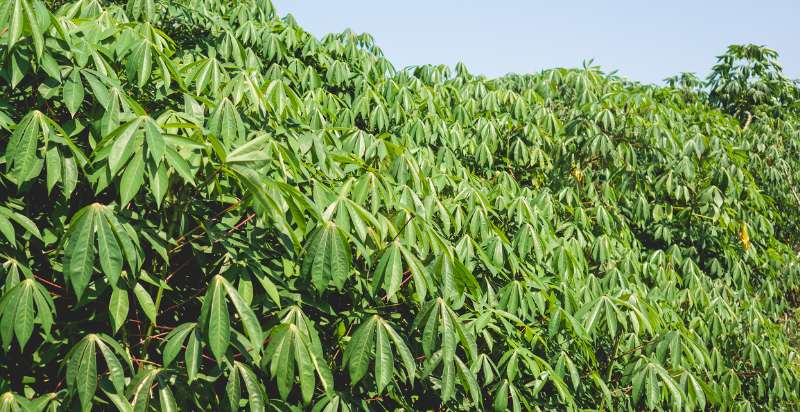
Preventions from Pests and Diseases:
- Crop rotation: To prevent soil-borne diseases, practice crop rotation and do not plant cassava in the same spot year after year.
- Sanitation: Remove any infected plants or plant parts from your garden to avoid spreading disease to other areas of your crop, and rotating crops will also help with this.
- Mulching: Keep the area around your cassava plants weed-free by mulching with straw, grass clippings, or other organic material. This will also help conserve moisture in the soil.
- Companion planting: Planting flowers such as marigolds near your cassava can repel some common pests and keep them away from your crop.
- Neem oil: To help control pests, you can use neem oil as a natural insecticide. Mix the oil with water and spray it on the leaves of your cassava plants. This will keep pests from eating away at your crop and reduce disease risk.
Following these preventive measures can greatly reduce the chance of pests or diseases affecting your cassava crop. With dedication and proper care, you’ll enjoy a plentiful harvest of this versatile root vegetable for many years.
Preparation Before Planting:
- Soil testing: Before planting, it’s important to test your soil to ensure that it is well-drained, has adequate fertility and pH levels and contains enough organic matter.
- Soil preparation: Once the soil has been tested, you can begin to prepare it for planting. Till or dig in organic material such as compost or manure to enrich the soil. This will add essential nutrients and help with drainage.
- Planting cassava cuttings: Once your soil is ready, you can start planting cassava cuttings. Cut healthy stem sections from mature plants and bury them about 4-6 inches deep in the prepared soil.
- Mulching: After planting your cassava cuttings, apply a 2-3 inch layer of mulch around them. This will help keep the soil moist and suppress weeds.
These steps ensure that your cassava plants get off to a good start and have the best chance of thriving. With enough care and attention, you’ll be able to enjoy a plentiful harvest in no time!
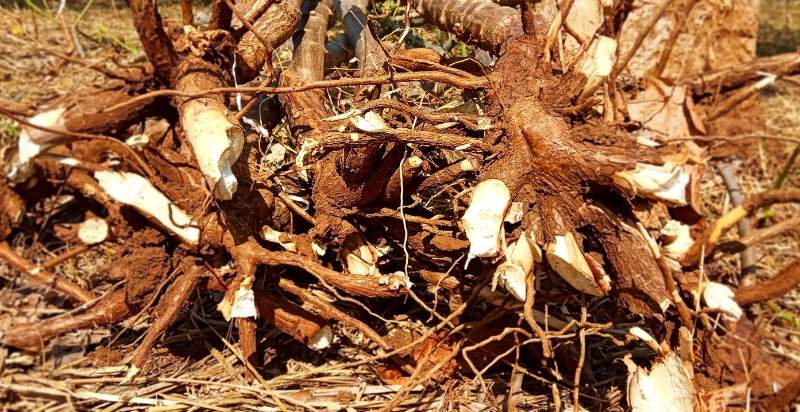
How to Harvesting Cassava?
When harvesting cassava, it’s important to wait until the leaves have completely dried out before pulling up the roots. To check for maturity, use a sharp knife to cut into one of the roots – if it is white inside with no discoloration or brown spots, it is ready for harvesting. Once harvested, store your cassava in a cool dark place away from direct sunlight until ready to use.
By following these simple steps, you can harvest cassava successfully every year. With proper care and knowledge, you’ll soon enjoy this nutritious root vegetable in all its delicious forms!
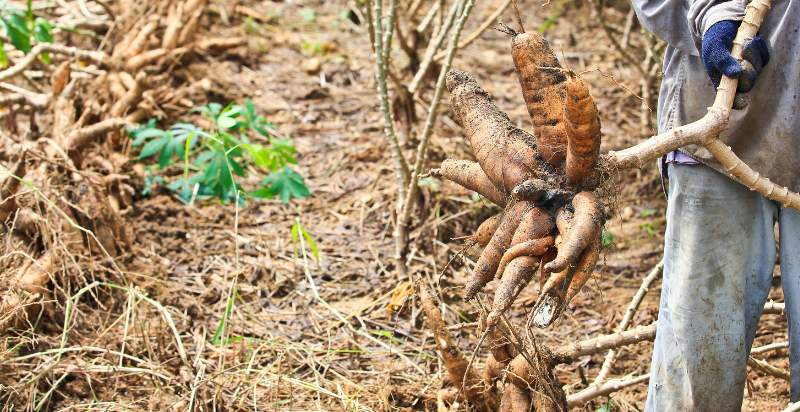
How to Storage Cassava?
Once harvested, cassava should be stored properly to keep it fresh. The best way to store cassava is by wrapping it tightly in newspaper or plastic wrap, then storing it in a cool dark place away from direct sunlight for up to two weeks. If you need to store the cassava for longer than two weeks, it’s best to freeze it for up to six months. Freezing will help prevent discoloration and rotting of the roots.
By storing your cassava properly, you can ensure it stays fresh and safe. With proper care and attention, you’ll be able to enjoy the benefits of this nutritious and delicious root vegetable for many months to come!
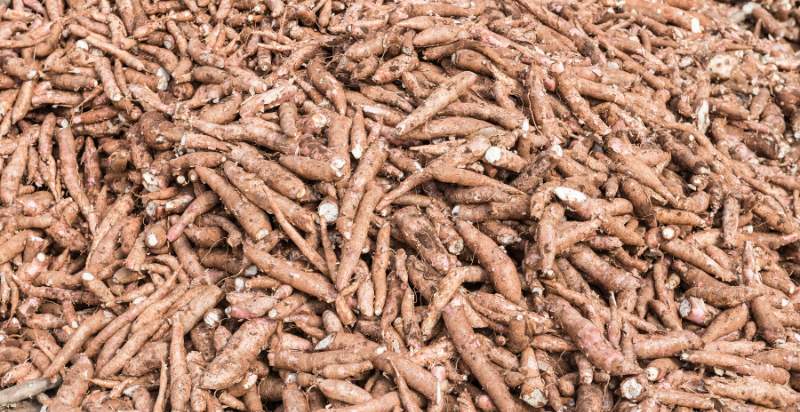
How to Cook Cassava?
Cassava is a versatile root vegetable that can be cooked in various ways. It can be boiled, steamed, baked, fried, mashed or roasted – endless possibilities! When cooking cassava, remember that the roots should always be peeled before consumption as they contain toxins that are unhealthy for human consumption.
As with any other vegetable, adding herbs and spices when cooking cassava will help enhance its flavor. Popular additions include garlic powder, onion powder, oregano, thyme, and basil.
You can enjoy this nutritious root vegetable in its many delicious forms by utilizing all the various ways to cook cassava.

What are other ways to use cassava?
- Culinary Uses: Cassava is widely used in sweet and savory dishes worldwide. It can be boiled, mashed, or fried into chips, snacks, and fritters. In many Latin American countries, it is also popularly used in desserts such as flan or served as a side dish alongside meats or fish.
- Beverages: Cassava is also used to make an alcoholic beverage called Chicha de Yuca in South America and tapai in Southeast Asia. It ferments grated cassava with water, yeast, and other flavorings such as cloves and cinnamon.
- Starch Production: The starch extracted from cassava can be used in various industrial applications, including papermaking, textiles, adhesives, pharmaceuticals, and cosmetics. In some parts of the world, it is also used as a thickening agent for soups and sauces.
- Animal Feed: Due to its high nutritional value and low cost, cassava is often used worldwide. It can be ground into a meal or fermented to produce palatable feed for livestock and poultry.
Cassava is an incredibly versatile crop that can be used in numerous ways. It has something to offer everyone’s taste buds, from snacks to beverages! You can get the most out of this nutritious and delicious root vegetable with creativity and knowledge.
Potential Risks From Cassava:
Cassava is generally safe to eat when cooked properly. However, improper handling and storage can lead to potential risks. All parts of the plant contain toxins that are unhealthy for human consumption and must be removed before cooking or eating. Unpeeled cassava root should never be eaten raw as it can cause serious health complications such as goiter and even death in extreme cases. Furthermore, when harvesting the roots, one should avoid contact with the eyes or skin as it can irritate due to oxalic acid in the plant.
To ensure that any potential risks associated with cassava are avoided, it is important to practice proper food safety when harvesting and preparing this nutritious root vegetable. By following these guidelines and cooking it thoroughly, you can enjoy the many benefits of this delicious staple food without worrying about any potential health risks.
In Conclusion:
Cassava is an excellent source of nutrition that can be grown relatively easily. With careful soil preparation, planting of cuttings, mulching, and harvesting, you’ll be able to enjoy a successful harvest every year. Additionally, by properly storing and cooking your cassava crop, you’ll reap the many benefits of this versatile root vegetable in its many delicious forms! So get growing and start enjoying the healthful advantages of cassava today.
- Everything You Wanted to Know About Red Tamarillos - June 2, 2025
- A Guide to Tulips: Everything You Need to Know & More… - June 2, 2025
- Guanabana: Description, Flavor, Benefits, And Uses - May 27, 2025

3 thoughts on “What is Cassava? How to Plant, Grow, and Harvest Cassava Root”
Comments are closed.